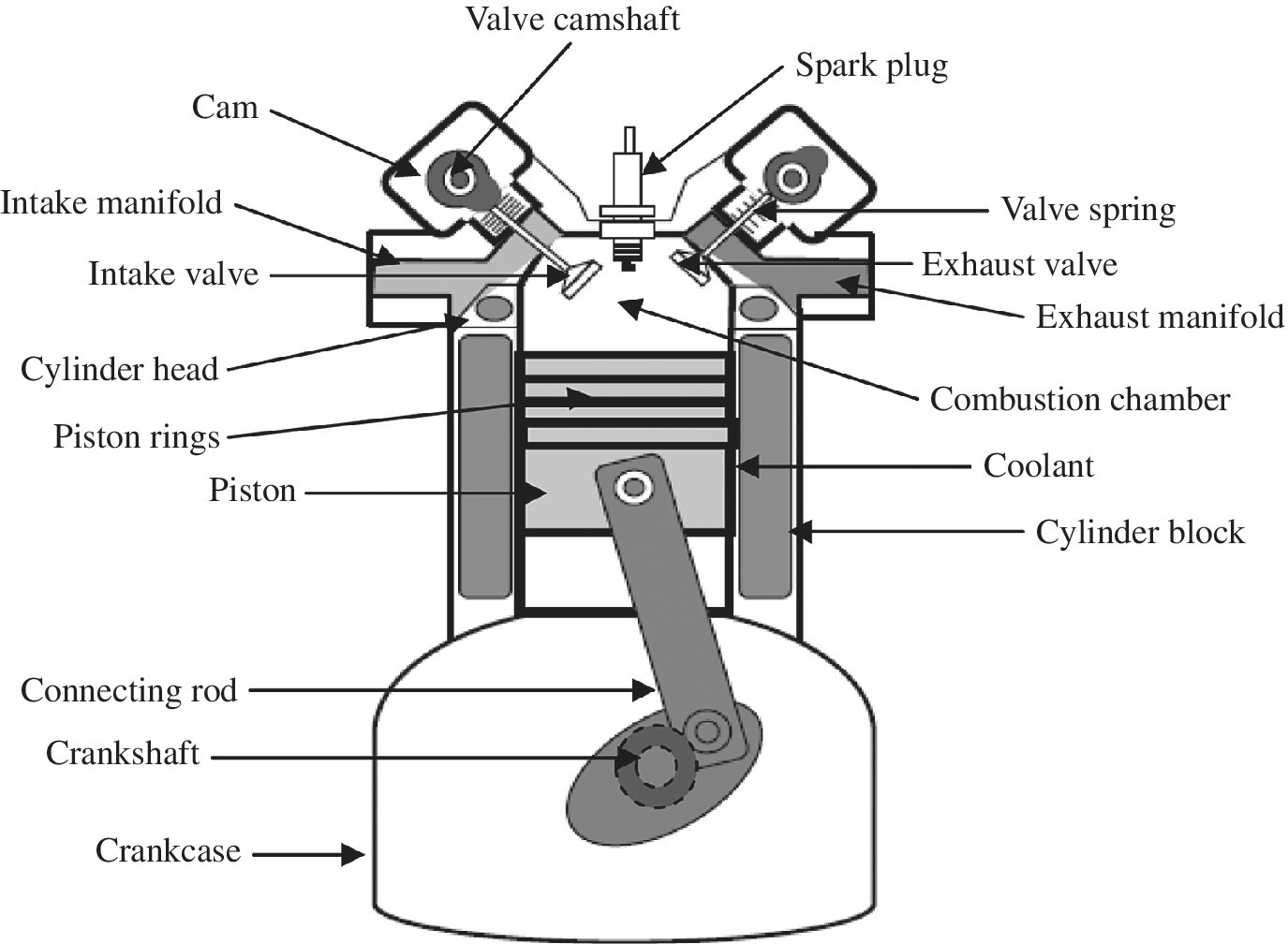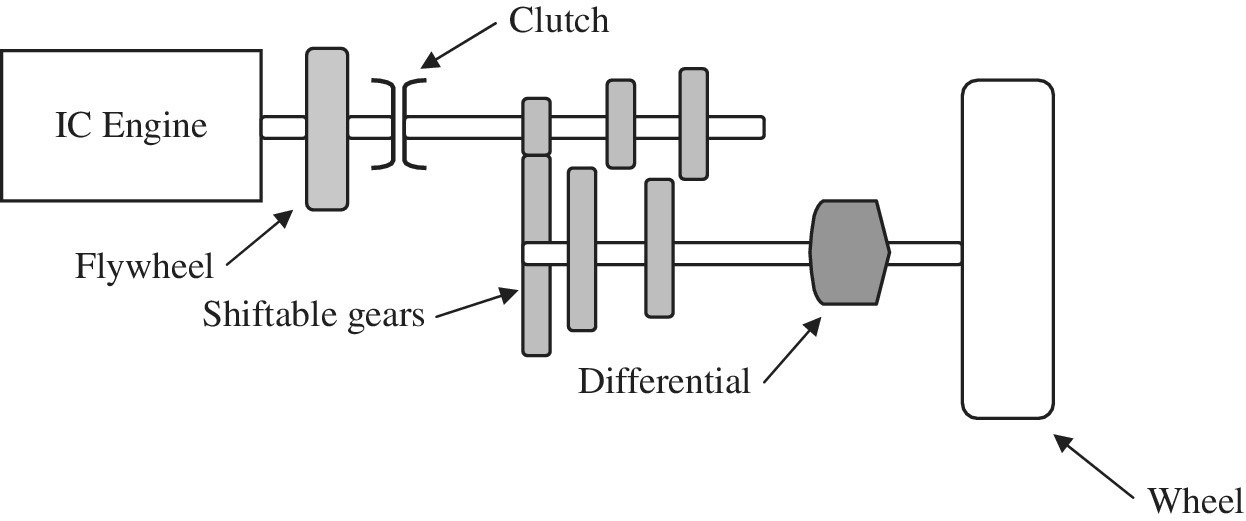2Concept of Hybridization of the Automobile
2.1 Vehicle Basics
2.1.1 Constituents of a Conventional Vehicle
Present‐day engine‐propelled automobiles have evolved over many years. Automobiles initially started with steam propulsion and later transitioned into ones based on the internal combustion engine (ICE). The focus of this chapter will be on ICE vehicles. So, the vehicles we use nowadays have diesel or gasoline (or petrol, as it is called in countries outside North America) engines. The engine provides the power to drive the vehicle. An illustration of an ICE is shown in Figure 2.1.

Figure 2.1 Cutaway view of an ICE.
The engine has a chamber where gasoline or diesel is ignited, and as a consequence, when the gaseous air–fuel mixture explodes, it creates a very high pressure to drive the pistons. A piston is connected through a reciprocating arm to a crankshaft, as shown in Figure 2.1. The crankshaft is connected to a flywheel which is then connected to a transmission system. The purpose of the transmission system is to match the torque speed profile of the engine to the torque speed profile of the load. Figure 2.2 shows a simplified diagram of a transmission system connected to an engine and a few intermediate devices.

Figure 2.2 Transmission system and engine connected ...
Get Hybrid Electric Vehicles, 2nd Edition now with the O’Reilly learning platform.
O’Reilly members experience books, live events, courses curated by job role, and more from O’Reilly and nearly 200 top publishers.

